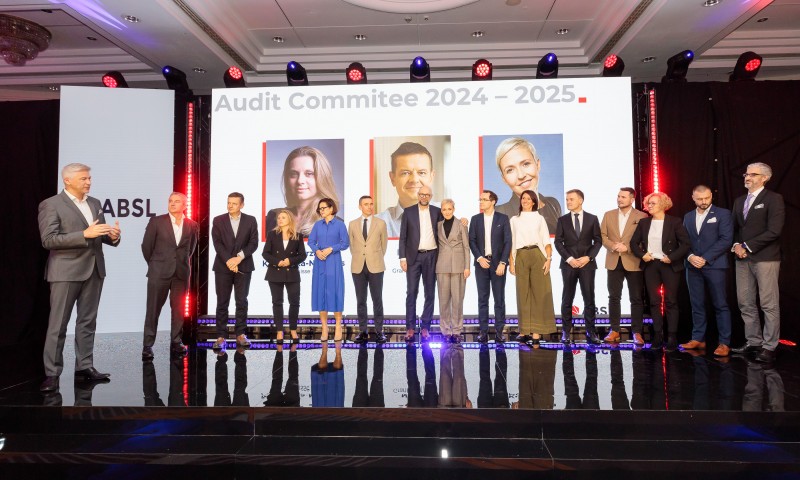Office market highlights of 2022. What awaits us next year?
Colliers sums up the key events and trends of 2022 in the office market and shares its forecasts for the next 12 months.
The outbreak of the war in Ukraine, the related uncertain socio-political situation, new legislation on corporate sustainability and the challenges of new work models are the factors that have strongly affected the real estate market, including offices, in 2022. And they will continue to affect it. Colliers experts have prepared a list of the most important events and trends in the passing year, as well as forecasts for 2023.
2022 office market highlights
- Regions are outpacing Warsaw
A significant wave of new supply has changed the balance of power in the office market. In 2022, for the first time, the total supply of modern office space in 8 major regional markets (Krakow, Wrocław, Tri-City, Łódź, Poznań, Katowice, Lublin and Szczecin) was larger than in the capital – by 200,000 sqm. Tri-City has joined the markets offering more than 1 million sqm of office space (Krakow and Wrocław). Katowice, on the other hand, saw record growth in office space, with developers delivering nearly 20 percent more offices to the market than last year. With a total supply of just under 720,000 sqm at the end of this year, the city is the fourth regional office market in Poland.
- First certification for technology
The well-known office certification systems, such as BREEAM, LEED and WELL, were joined by SmartScore and WiredScore, allowing for an objective assessment of a property’s technological sophistication. The first one takes into account the analysis of the comprehensiveness of smart systems, their security and flexibility, while the second focuses on assessing the technical sophistication of the building. The first building in the CEE region to receive (with Colliers’ advice) both certificates was Warsaw’s The Bridge, which is being built by Ghelamco.
- Fewer construction projects, larger supply gap
The market is seeing a marked slowdown in development activity. The large wave of new supply that has been going on for the past two years has come to an end, and the stoppage in the issuance of new building permits will result in a supply gap in Warsaw and some regional markets in 2023-2024.
“There are several factors contributing to the decline in the number of construction projects, but a key one today is the record high level of inflation, which is driving up the cost of construction materials, land, utilities or wages, among others. Meanwhile, the low supply of new space is generating pressure on asking rents, and rising energy prices are sure to affect service charge rates. However, this will not result in a decrease in tenant activity. It can be expected that the next quarters will enable absorption of newly delivered space,” says Paweł Skałba, Senior Partner, Head of Office Space Department, Colliers.
- Largest office transaction in the CEE region
Poland maintains its position as the most attractive market in the CEE region, thanks to high liquidity as well as a wide range of high quality investment products. The sale of the office and hotel complex built by Ghelamco – The Warsaw HUB to Google for EUR 586 million was the largest single office transaction in the history of the Polish market and the CEE region.
ESG regulations and sustainability issues are among the stronger trends in the real estate market, especially in the office market. European Union requirements oblige owners of old office buildings to modernize them to promote climate neutrality, among other things. Importantly, environmental gain in projects is becoming no less important than financial gain, and ESG is starting to be an increasingly important justification for business decisions.
“Currently, some 190 million buildings in the European Union are energy inefficient, so the European Commission has required member states to develop and implement long-term renovation strategies. Poland published such a document in February 2021. Also, a regulation called Taxonomy imposes requirements for buildings undergoing renovation – the primary energy on the energy performance certificate must be at a level 30 percent lower than before the renovation. Tenants’ awareness of the benefits of leasing space in an energy-efficient building is also growing, further motivating building owners to upgrade to keep their property competitive,” says Izabela Makowska-Kwiecińska, Associate Director in the ESG Department, Colliers.
What awaits us in 2023 in the office market?
- Searching for savings
The need to seek savings due to rising maintenance costs will be one of the main challenges facing the office real estate market in the coming quarters. This will result in increased interest in new, greener and more energy-efficient office buildings. Certified projects offer not only real savings for tenants and owners, but also better work comfort, which affects employee efficiency and increases the frequency of work from the office.
- Stable investment activity
Poland will increase its share as a key market in the CEE region. The adjustment in the capital value of assets is significantly offset by rising rents in both Warsaw and regional cities, generating investor interest. Further capital inflows are expected from Romania, the Baltics, the Czech Republic and Hungary. Middle Eastern countries are also planning to invest more in the region.
“Investors’ attention will continue to be drawn to office buildings – thanks to the potential for rising rent rates, high levels of demand and net absorption despite the introduction of a hybrid work model. We expect that the supply gap will direct the funds’ attention not only to newly completed office buildings, but also to well-established complexes with an established reputation among tenants,” says Piotr Mirowski, Senior Partner, Head of Investment Advisory Department, Colliers.
- More renegotiations
After a wave of price increases, the cost of arranging office space has stabilized, but still remains high. This situation influences the decisions of office building owners to reduce the so-called incentive packages. This, combined with the expected supply gap, will make tenants more likely to stay in their current office location rather than look for a new office.
“By renegotiating lease agreements, companies will be able to get additional benefits in the form of periodic rent exemptions, as well as a budget for refreshing the space,” says Paweł Skałba.
- The old office in better shape
The increased tenant awareness of the services related to defining the functions, concepts and strategies of a property translates into an increase in expectations to best meet the needs of users and businesses, both in terms of space design and arrangement.
“Transforming existing space, including under a renegotiated agreement, requires a slightly different approach than designing a new office. In the process, the key is to find the golden mean between employee and organizational needs, financial issues and market trends. Only this makes it possible to minimize the scope of changes at the design stage, which then translates into a lower cost of arrangement works,” says Paweł Szafarczyk, Colliers Define.

Izabela Makowska-Kwiecińska
Associate Director in the ESG Department, Colliers

Paweł Skałba
Senior Partner, Senior Partner, Head of Office Space Department, Colliers









